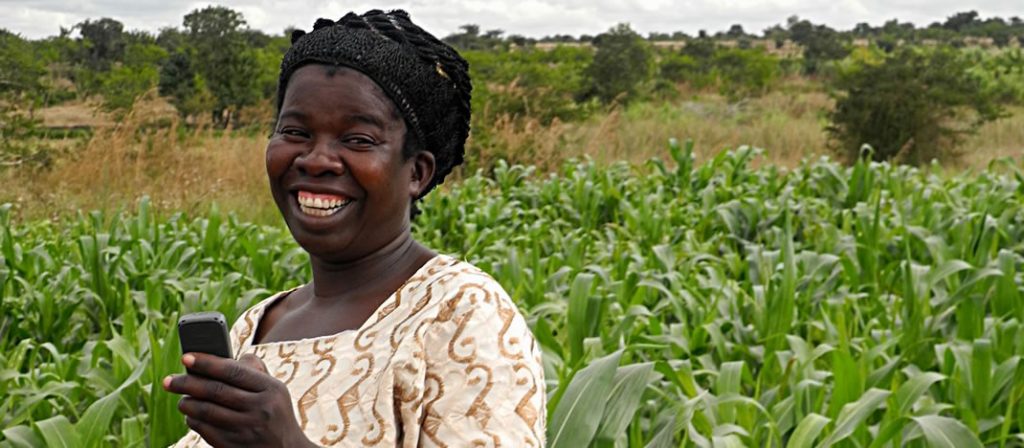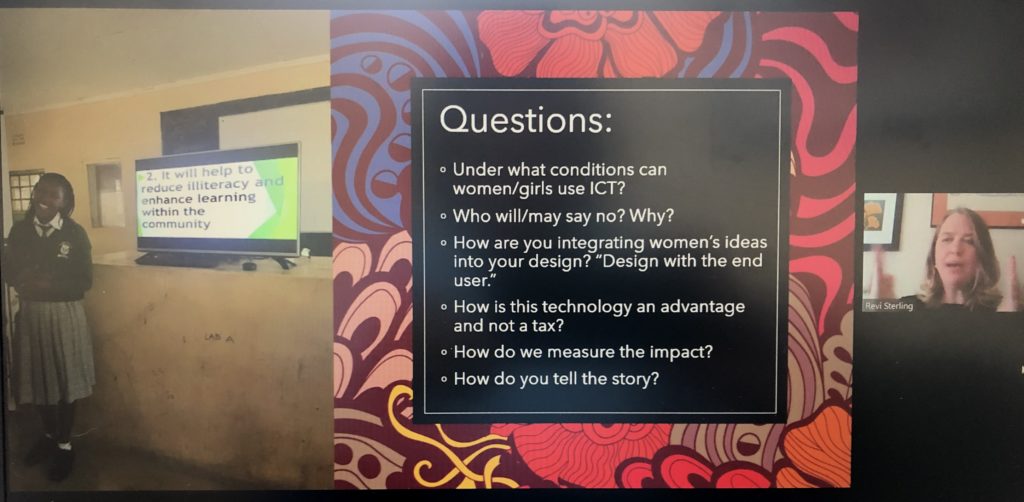
Think of the end user (women!) when developing technology.
8.3 billion. Did you know that there are more cell phone subscriptions than people on earth (7.9 billion)? However, more than half of the population, about 4 billion people, have never used a cell phone. Most of these people are women.

On April 8, 2021, Revi Sterling, Director of USAID Women Connect Challenge, made a presentation titled “Why Most Women Will Never Own a Smart Phone.” Sterling describes herself as a “technologist and social scientist with deep expertise in gender inclusion, cross-sectoral development strategies, and creative and effective fieldwork methods.” She started her career at Microsoft and then followed her passion to global development, working in more than 30 countries.
In the talk, organized by the Mount Holyoke College McCulloch Center for Global Initiatives, she explained the field of Information and Communication Technology for Development (ICTD), which is focused on ending the gender digital divide. This field promotes the use of technology by women for their own empowerment and attracts people interested in the intersection of social good and technology.
Cultural and socio-economic reasons hinder women’s full participation. There are many specific barriers to women’s use of technology around the world, including: cost, literacy, digital literacy, time, mobility, perceived relevance, safety, self-esteem/self-efficacy, and social norms. In many places, a husband will not allow his wife to use or listen to a phone unattended.
Sustainability and scalability of any program will be more effective with the use of mobile phones. Many people globally use “mobile money,” for instance. And yet, mobile technology development can be out of sync. It is easy to make an app and push it out (and this is done thousands of times over), but these cannot be used with the low-tech, $12 Nokia type mobile phones that are most prevalent world-wide. (They can text and take photos, but are otherwise not smart phones.) Consider also that some cultures have only oral language, not written (pointing toward the use of icons).
We all have heard stories of tractors sitting rusting in fields in far away places because proper support was not provided to the local community. There were no replacement parts, training on maintenance and repair, income generating programs to buy the gas to run the tractor. This is an example of a well-meaning idea gone wrong. Low tech solutions would have been more effective. Turn the clock forward several decades and the developing world is now littered with hand-me-down computers with sluggish, antiquated operating systems and an insufficient power grid to run them. So, making mobile technology more accessible to women everywhere must also be approached with the type of equipment most readily available.
Around the world, most people do not use browsers on the internet. They think that the internet is Facebook, and vice versa. Fraud and gender-based violence, misinformation and disinformation are major concerns. However, women and girls are constantly exposed to threats and danger in their lives already and this should not keep them from benefitting from the huge upside of using technology. Safety and online GBV must be combated through education.

Questions to Ask when Creating Technology for Developing Countries
- Who is NOT accessing/using technology? What are the core issues? (For instance, child brides.)
- Under what local conditions would women and girls be allowed to use technology?
- What are women’s needs?
- What are the gate keepers’ fears?
- What is the power source?
For more information, here are Effective Practices for Closing the Gender Digital Divide.
It is hard to understate the importance of women’s access to technology. They are the ones in the household responsible for their children’s health and education. 90% of all jobs have some tech in them. Access to information through technology can mean life or death, especially in times of natural disasters and global crises, such as COVID-19.


